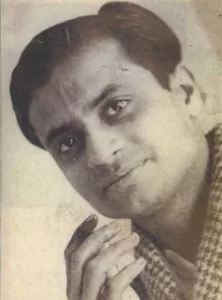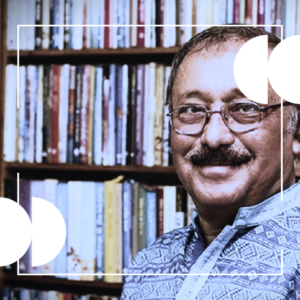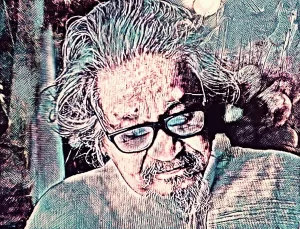
Share the post "Representing the Khumi of the Chittagong Hill Tracts: The Making of a Film"
This paper was presented at a conference on ‘ASIAN BORDERLANDS: ENCLOSURE, INTERACTION AND TRANSFORMATION. (5-7 November 2010-10-04 Chiang Mai, Thailand)
Introducing the Chittagong Hill Tracts
The south eastern part of Bangladesh, commonly known as the Chittagong Hill Tracts (CHT) occupies a physical area of 5093 square miles, or 13,295 square kilometres constituting ten per cent of Bangladesh’s total land area. It shares borders with India and Myanmar and is inhabited by about 13 (according to some estimates 10) ethnic groups among whom the Chakmas, Marmas and Tripuras constitute the majority. Non-indigenous hill people, i.e. Bengalis who are predominantly Muslims also live in the CHT.
According to the 1991 Census, the total population is 974,465 out of which 501,145 (51 per cent) belong to groups of different ethnic origins. About 49 per cent are Bengalis. Out of the total land of the CHT, only about 3.1 per cent is suitable for agricultural cultivation, 18.7 per cent for horticulture and the remaining 72 per cent for forestry.
Over the last quarter century, the indigenous people of the Hill Tracts have been involved in a struggle for autonomy from the Bangladesh state. The main roots of the crisis on the CHT centred on the land issue, the transfer of population from plain districts and the control of administration by non-inhabitants. Besides, discrimination, deprivation and exploitation in social, cultural, economic and political fields and the programme of assimilation of the indigenous hill people into the majority Bengali population were other bones of contention.
It was in 1997 that the Parbotto Chattagram Jana Samhati Samiti (PCJSS or JSS), the armed wing of the struggle for Jummaland reached a peace accord with the Government of Bangladesh. The accord came in for considerable criticism by people of different political persuasions. The mainstream political party, the BNP (then in the opposition), thought it was a sell out on the part of the government to the rebels. The ‘civilian wing’ of the struggle, the Proshit group, through it was a sell out on the part of the Shantibahini (as the armed wing was popularly called). The split within the struggle resulted in the formation of two parties of which one, the JSS, because it had signed the accord, now became the official party to form the Regional Council, and the United People’s Democratic Front (UPDF) became the opposition. The result was the polarization of the politics of the Hill Tracts and the division of the people into two – and as a consequence their bargaining power has been reduced. More than five years have passed since the Accord and signs of implementation have been slow. The recently elected government which had been a party to the accord has yet to fulfil its election pledge of full implementation of the CHT Accord. Until that day comes, the indigenous people of the hills wait with growing scepticism.
Introducing the Khumi
The Khumi is one of the smallest ethnic group in Bangladesh. Very little has been written on them. According to the governmental and non-governmental sources in 1998 , the number of Khumis were near to 2,000.They have their own language, culture, and social customs which distinguishes them from other ethnic communities.
Some argued that the Khumis came to this area and started living in Karpas Mahal ( old name for the Chittagong Hill Tracts) in the era of the Chakma queen Kalindi Rani. Khumis originated in the Arakans in Burma (Myanmar). Due to ethnic conflict around 1430 they fled to the CHT.
Now they live in three areas specially Rwangchari, Ruma and Thanchi of Bandarban district in Chittagong Hill Tract. In 1430 the Khumis fled to the present Rwangchhari, Ruma and Thanchhi Upazilas of CHT. They gradually settled permanently in this place. Today the Khumis are considered to be among the larger ethnic groups inhabiting Burma. In Bangladesh currently they are estimated to be only 2000 or 2,500 in number.
Khumis retain their own customary practices, which is taken care of by their Headmen (of Mouzas) and Karbaris (chief of the villages, a traditional administrative unit). Karbaris arbitrate incidents like small theft etc. If the theft is proven then they have to pay a fine of 60 silver coins (which has now been devalued to 60 taka). If young girls become pregnant through cohabitation, then they have to pay a fine of 60 coins and a boar. The mother has to give birth at the boy’s home. But the son’s family cannot ever claim this child. Khumis are forbidden to marry within ones clan. Marriages are arranged through elders of the family.
The pattern of Khumi society is patrilineal. The ownership of land belongs to only male. The Khumi is divided into two clans i.e. Awa and Ahraing, within these they have various descents named as Shamthang, Kechcha, Buting, Beule, Fouland, Crimsang etc. Marriage between same clan is socially forbidden. Though Khumi society is patrilineal, bride payment ( Kone pon) is still functioning.
Khumis believe in animism. But nowadays there is a tendency to be converted to Crama ( a new syncretic religion of Buddhism and Christianity), Buddhism and Christianity. The proportions stands at animists 30.3%, Buddhist 22.78%, Crama 10.95% and Christian 35.97%
Jum cultivation is still considered as the main source of economy of Khumi community. They are the practitioners of subsistence economy. Most of their festivals and religious practice more or less related with jum cultivation. Both Khumi men and women work in Jum field. Khumi has their own language, which is a part of Kuki- Chin language family.
Khumis celebrate Harvest festival ( Nobanno) twice a year. The first puja is held in three months of June/July They sacrifice pigs, cocks and fowls, to the Gods so that they will have a good harvest. The second festival is held at the end of harvesting the rice, when they thank the Gods for the crop through sacrificing goats, fowls etc in the mountain springs and canals. This festival is called Wangia in the Khumi language. During the two days of the festival, the neighbourhoods are closed so that no one can go out. Rice cakes are prepared in each household, which they take with home produced wine and meat.
The Question of Representation
The representation of ethnic minorities in general in the mainstream media (both electronic as well as print) does not really do justice to the richness, variety, challenges and struggle of their lives and culture. The mainstream media dominated by the Bengali mindset, represents them commercially and selectively. A letter of protest by one journalist to another portrays the incongruity in the perception of the ‘indigenous’ in the minds of a Bengali. I quote at length: “ Dear Pallab, seeing your write-up in a Dainik Samakal supplement, my first reaction was to pull out the paper and read it in one go……I am however finding it difficult to digest your write-up on the Marma community’s new year celebration, “Sangrai” at Chitmorom, due to the perspective from which it has been presented. My discontentment is not with the language, subject matter or even the overall theme of your essay, but my morose disappointment lies in how you, my dear friend Pallab, have reflected the lecherous exoticism with which the Bengali majority has been viewing jumma ( those engaged with jum)women for about a hundred years now. It is not your voice I disagree with, it’s your lens that I reject.
Dear Pallab, we Bengalis have always suffered from an incorrigible romanticism when it comes to the indigenous Paharis; especially Pahari women. I suppose one reason behind this is that Pahari women are as pristine as the nature that surrounds them (like “fairies” as you put it). So I suppose virgin fantasies show us the immense possibility of corrupting them. If you revisit the history of the Chittagong Hill Tracts, you will see that this eye-candy of a landscape – the hills, the greenery and the waterfalls – is tainted with mass murders, mass rapes, tyranny and neglect. I am sure you remember Kalpana Chakma. What became of the vanished female leader, I hope Pallab, you can easily deduce.” (Rahman, 2010).
Asides from this sexual connotation, indigenous cultures have also been show-cased by the state during celebration of national events like Independence Day or Victory Day. During these occasions, the dances and music of indigenous cultures are paraded in public as a demonstration of diversity. Yet the communities are portrayed in a passive manner, never as thinking and creative agents seeking transformation of their lives and the system they live under.
This is the context in which Ittukgula Changma alias Shuvashis Chakma (his Bengalicized name) came to us with his proposition to record the culture of two of the most smallest ethnic group of the Chittagong Hill tracts. Ittukgula himself belonged to one of the largest and most educated ethnic group of the region. Hailing from Khagrachhari, the northernmost district of the Hill Tracts, Ittukgula during his student days in Dhaka, had attended a course in photography and had involved himself with a group in the short film forum (popular name for the alternative media movement in Bangladesh) called Chalachitram. He also worked with well-known film director Morshedul Islam in several of his films to gain first hand experience. Apart from this exposure he was practically self-taught. Ittukgula was also an activist committed to the cause of self-determination for his people. During the period of turmoil in the Hills when Bengali settlers brought in by the state as a counterinsurgency measure clashed frequently with indigenous communities mostly over land issues, Ittukgula made his first film Terrified Voices in the backdrop of arson and assault by Bengali settlers on indigenous houses in Mahalchhari. His camera had become a tool for his activism.
Ittukgula first thought of making a film on the Khumis, when he had gone to Bandarban for the first time in 1996 with a friend and visited some Khumi villages. What had captured his imagination was the row of animal heads that adorned the entrance to their houses as prize trophies of their hunting prowess. Much later in 2005 when Ittukgula went to shoot his film, very few such scenes could be found. In fact he had heard that the Khumis had a special dance where they celebrated their hunting prowess and desperately sought such a performance to document, but he found none. It seems that Khumis were more and more beginning to feel ashamed of this aspect of their culture and was more keen on hiding it than revealing it to outsiders.
However Ittukgula did manage to shoot the harvest festivals and even the Reng (or cow pulling) ritual in the wedding festivities, which has become very rare these days. The Reng is a ritual in a wedding when a cow is pulled from each side on opposite directions by two teams each belonging to the bride and bridegroom just as in a tug of war until the cow is killed and prepared to be cooked and eaten as part of the wedding feast.
Ittukgula’s proposition was interesting, because (a) it focused on a very marginalized community, which suited well RIB’s general mandate to engage the marginalized in its research activities, (2) it believed in the inherent richness of such cultures, however deprived or underprivileged a group must be, (3) since RIB adopted a multidimensional concept of poverty, the Khumis presented an interesting example of social and ethnic discrimination which has led them down the path of near extinction and (4) wished to engage the thoughts and reflection of the community in a proactive way through the adoption of participatory practices.
RIB therefore decided to support this project not only to document the ethnographic characteristic of the community, but also to know how this ethnic community wants to project themselves in the media or which cultural component they were interested to expose in the media. It therefore asked the director to engage the Khumi people in a series of dialogue before, during and after the filming. After a rough cut of the film was done, he was to show it first to the community so that they can validate the final product, (in short the process of participatory action research which was followed in RIB’s other research was also followed in this case. By following this process, the director was able to challenge the mainstream discourse of presentation of indigenous groups in Bangladesh. The outcome was the film Khumi Ai, Ai Monai Rita (Khumi Lives).
The Making of the Film
The film was shot in three four paras or neighbourhoods of villages located in the Rwangchhari Upazila (sub-district) of Bandarban district. The paras were: Aungton, Longton, Monglu, Sanking. They were about 4 to 5 km in distance apart from each other.
They were all located in a relatively high altitude and situated in a remote area. The areas were not ordinarily visited by Bengalis. In fact once when one of RIB’s staff had gone with the film crew to monitor the project, she happened to be the first Bengali woman who had ever visited that particular village.
It was difficult to get a really mixed film crew i.e. getting a substantive number of film technicians who were also indigenous. In fact apart from Ittukgula most technicians like cameraman, soundman etc were Bengalis. Due to limitations of technical know-how, most editing and processing of the film had to be done with help of Bengalis. Although several activists did experiment with home made videos, as a committed film maker Ittukgula was a loner in his community. And even then Ittukgula represented the largest and most educated among the ethnic communities in the Hills. In order to transcend the social and linguistic barrier local Khumis had to act as resource persons. Ittukgula was lucky to get the help of Lelung Khumi, who just after the filming was over, received an Australian scholarship to study in the Southern Cross University of Australia and became the first graduate in his community. Lelung helped to bridge the gap between the film crew and the community. As per RIB’s prescription the film crew and the community sat in a series of dialogue as to the content of the film; what is to be represented about their culture. Lelung mentioned that the community was first and foremost assured that they will not be projected for any commercial purpose or in a way that was negative to their culture. Before finally editing the film, the first version of the film was shown to a selected number of people from all four paras who came down to Bandarban for the show.
Different aspects of the film
In the film, Ittukgula, tried to cover broadly the following areas (a) animist rituals like harvest festivals or Reng which are fast disappearing but which the Khumi think essential for their identity; (b) the education of their children in government schools where the medium of instruction is not their mother tongue, (c) the three institutional religions which engulfing their animist beliefs, Buddhism, Christianity and Crama, a new religion borne out of the syncretism of Buddhism and Christianity, (d) their interaction with Bengalis in the market, ( c) the payment of annual tax to the King of the Bawm circle, (e) the richness of their crafts and attire, (f) above all, the sights and sounds of the breathtaking landscape and natural beauty that surrounds their settlements.
The challenges
Among the challenges faced by the film maker the foremost was the difficulty in being mobile, both physically and politically. Most locations were at a high altitude with no proper roads or even tracks and it was difficult for the crew to haul up equipments to that point. But more problematic was the pressure of the official surveillance under which they had to work under. It was mentioned earlier that one of the acute problems in the hills was the continuing militarization. This has made movement by hill people and any kind of investigative work in the hills very difficult and suspect to government agencies. Ittukgula and his team therefore had to take this risk in a very big way, but fortunately for them they did not meet any major resistance.
The major challenge was from the specific perspective of studying small nationalities: They had no sense of broader solidarity and hence was dominated by both Bengalis and larger ethnic minority groups. For example the lingua franca they use outside their villages was very mixed. In the market place the spoke a half Chittagonian dialect of Bengali and when speaking with other ethnic groups in Bandarban they spoke Marma. Government schools did not teach in the mother tongue so an attempt of formal schooling in the Khumi language is limited to local attempts as depicted in the film.
Concluding remarks
Both Ittukgula Changma and Lelung Khumi had suggestions which they wanted me to tell the outside world and I will conclude with these. According to Ittukgula Changma there should be attempt by both the state and the international community to protect and preserve the culture of such small endangered and vulnerable communities, in the interest of diversity and also for reasons of democratic practice.
Lelung Khumi emphasizes the need for special consideration on part of the local administration to ensure security and protection of the material and spiritual well being of small communities. In an article on the current debate on Indigenous vs. small ethnic group, he writes: “I strongly believe that I have rights to decide who I am and how I want people to call me. I do not simply cover up my identity by putting the Marma and Chakma identities on top of my Khumi identity.” ( Khumi, 2010).
Lelung’s words are especially relevant in the context of the recent contradictions created by the Bangladesh state on the use of the word ‘indigenous’. Much to the dislike of many indigenous people, the Accord of 1997 had addressed them as ‘Upojati” (literally translated sub-nation, and equivalently used in English as tribal). The people have long been struggling against the notion that they are “sub” to any nation. In Bangla, the word adivasi (equivalent to the word indigenous) has been loosely used. But now changes are taking place in the official circles.
Lelung Khumi describes this process in his article ( Khumi, 2010 p.225). A few months ago the Ministry of CHT Affairs ( MoCHTA)issued a ‘secret’ letter ordering all government officials, deputy commissioners ( DCs), superintendent police and local administrative officials to use the term ‘tribe’ instead of indigenous. A few months after this letter was issued, by the Ministry of CHT Affairs, the Bangladesh Government passed a bill of “Small Ethnic Group Cultural Institute Law, 2010” at the parliamentary session of April 2010 following the bill, all “Tribal Cultural Institutes in the indigenous inhabited areas of Chittagong Hill Tracts, Cox’s Bazaar and North-western part of Bangladesh were directed to use the term “Small Ethnic Group Cultural Institute Law,2010.”
Just before the bill was passed the Foreign Minister Dr. Dipu Moni was recorded as saying that Bangladesh does not have any indigenous population, but has several ethnic minorities and tribal population. This rather clownish dance of terminologies has its roots in the resistance and evasiveness on the part of the Bangladesh Government to acknowledge the customary land rights of indigenous people. In a land scarce country and a growing affluent class engulfed by a colossal land hunger, even the tiniest submission to communal ownership of property seems to threaten the very foundations of their existence.
It is for this reason that it is especially important that both Ittukgula Changma and Lelung Khumi’s call to the international community for external support towards the preservation and protection of identity and culture of small ethnic communities should not go unattended.
References:
Biplob Rahman (2010) Pristine Fairies and Sexy Pahari Girls in Naeem Mohaiemen ed. Between Ashes and Hope: Chittagong Hill Tracts in the Blind Spot of Bangladesh Nationalism, Dhaka: Drishtipat Writers Collective, pp.192-193
Lelung Khumi, ‘Indigenous vs. Small Ethnic Group’ in Naeem Mohaiemen (ed) Between Ashes and Hope: Chittagong Hill Tracts in the Blind Spot of Bangladesh Nationalism, Dhaka: Drishtipat Writers Collective, pp225-226
Meghna Guhathakurta, (2004) Ethnic Violence in a post-conflict situation, paper presented in a conference organized by Dept. of Sociology, University of Mumbai, March 3 to 5.
S.A. Pru, ed. (2003) Sangu, Bandarban, Upajatio Shongskritik Institute, June.
Romakanto Singho, (2002) Bangladesher Nrittatik Jonogoshti, Dhaka: H. Development Publishing House, June.







